When you think about Hawaiian food, you probably think about pineapples, shave ice, and Hawaiian BBQ. But did you know that Hawaii is the only place in the United States where cocoa beans are grown? Over the weekend, Nick and I spent an afternoon at Madre Chocolate in Kailua, Hawaii, learning how to make chocolate, about how Hawaiian chocolate is different from chocolate grown in other parts of the world, and even about the origins of chocolate. For a chocoholic like me, this was the perfect way to spend an afternoon.
One item on my Hawaiian Bucket List is to learn to make Hawaiian foods, and while chocolate isn’t specifically a Hawaiian food, I think that this counts because I learned that cocoa can only grow within 20° of latitude from the equator, making it somewhat unique to Hawaii.
There are lots of local farms that are growing cocoa beans in Hawaii, so I don’t think a trip to Hawaii could be complete without sampling some Hawaiian chocolate, grown right here! That’s the only excuse I need!
Madre Chocolate is the tiniest little shop in Kailua. It’s easy to overlook it because it’s not in the main downtown area, where all of the tourists go. Nick and I walked by it on Saturday, saw a sign in the window for a chocolate making class, and immediately signed up for a class the next day.
I loved that the class was taught by one of the shop’s cofounders, Nat. Nat is not your typical baker – he has a PhD in Ethnobotany and really has a passion for preserving the cultural heritage of chocolate, infusing his chocolate with the flavors of Hawaii, working with small, local farmers to get the best ingredients, and even working with farmers in other countries to get fair trade cocoa beans.
The class was more of a demonstration than a cooking class. I was a little disappointed in this because the class description makes it sound like you are going to be covered in chocolate by the end, which I totally would have loved. But considering the lengthy process involved in making chocolate and all of the equipment needed, not to mention the small space of the shop, I think that the demonstration was the way to go. The demonstration also enabled Nat to talk to us about chocolate while he was working.
These are the only ingredients in the chocolate bars made at Madre Chocolate: vanilla, sugar, cocoa beans, and cocoa butter.
The process to make chocolate involves roasting the beans, removing the outer shell, grinding them up and adding the vanilla and sugar. And that’s just the first part!
Before they are roasted, the beans actually taste kind of gross! I think they kind of tasted like green beans. Actually, even after they are roasted, I didn’t like the taste. It was not until the sugar was mixed in with the ground up beans that it started to taste like chocolate to me.
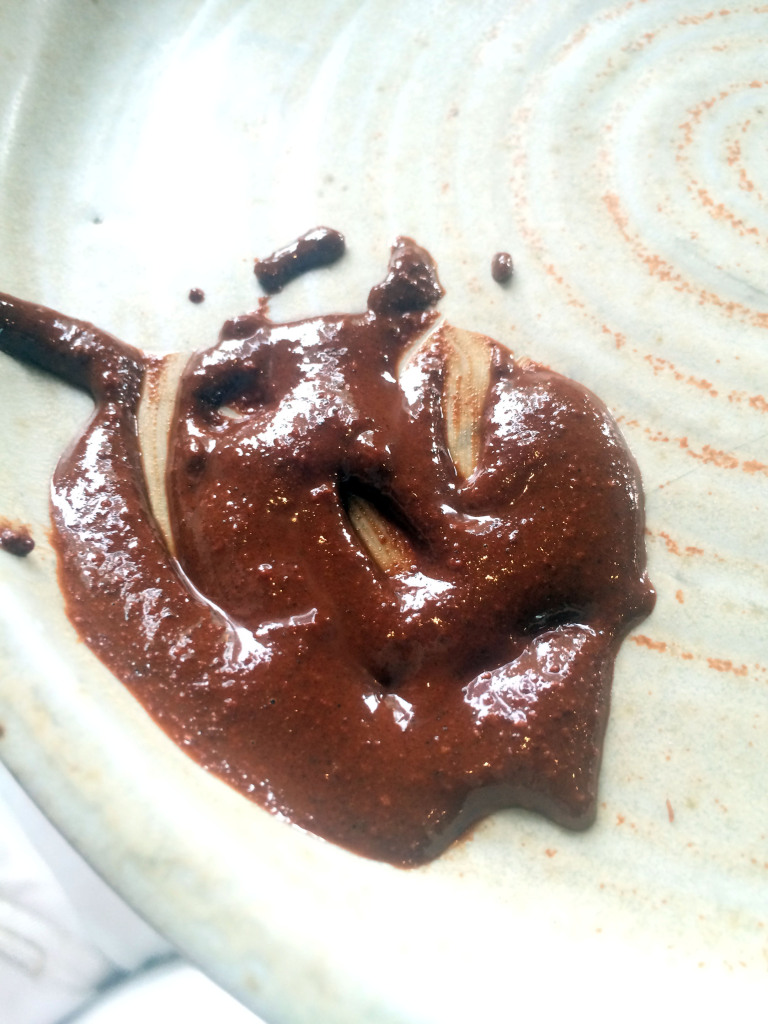
Starting to look (and taste!) like chocolate!After that, Nat told us about the origins of chocolate and even about the Maya glyph for cacao, which he adapted for his logo.

Image via www.madrechocolate.com
From his website:
“We saw the Maya glyph for cacao (Above, left) and thought it would be perfect for our logo as it encompasses the Maya’s highly developed civilization that helped make chocolate what it is today along with a fully developed writing system developed completely independently from that of the West. Though long thought to be a pictorial writing system where each concept is represented by a complete picture (e.g. a fish is written as a simplified image of a fish), Mayan writing was finally deciphered to actually be a phonetic system, as detailed in Michael Coe’s excellent book, “Breaking the Maya Code.” This book details how after centuries of confusion, after consulting with modern Maya speakers, researchers realized that there were many ways of writing each syllable in the language.
So in the glyph above both the comb shape on the left and the monkey/fish head represent the sound “ka”. The left curly cue under the head is “u” and the right curl is “wa”. Put it all together in left to right order and you get “ka-ka-u-wa”, “kakau(w)a”, or “cacao” as we write it today. We took this image, swapped out the comb on the left for an actual cacao pod and leaf, and turn the monkey’s frown upside down since, obviously he is starting at and represents something that makes the delicious and happiness inducing chocolate, so he should be smiling! We hope this will help you think of the long, beautiful, and complex history of chocolate every time you look at and start to devour one of our bars!”
After we learned a little bit more about the history of chocolate, it was time to temper the chocolate. Tempering chocolate involves continuously stirring and monitoring the temperature of the chocolate so that it will have a smooth, glossy look to it. You only need to temper the chocolate if you want to use it for something like a bar where that matters. However, it needs to be done very precisely, otherwise, you will need to start all over. I stayed in the back for that because I didn’t want to be the person who causes people to not get their chocolate!
After the tempering process, it was time to put our chocolate into molds and add the spices we wanted. I went with sea salt and pecans while Nick gave different sections different flavors. He ended up with amaranth, pecan & sea salt, and chipotle.
The shop sells a lot of really interesting Hawaiian-inspired bars, like coconut milk and caramelized ginger, hibiscus, and Lili’koi Passionfruit. We were able to sample most of these while the chocolate was settling into the molds and compare them to the bars from beans grown in other parts of the world. Hawaiian chocolate really does have a unique flavor!
It was a really fun day. I love chocolate but I feel like I have such a deeper appreciation for the process through which it is grown and then made. I don’t think I will look at chocolate the same way ever again!
If you don’t have time for a full class while you are in Hawaii, I would definitly check out some different kinds of Hawaiian chocolate bars with cocoa beans grown here in Hawaii.

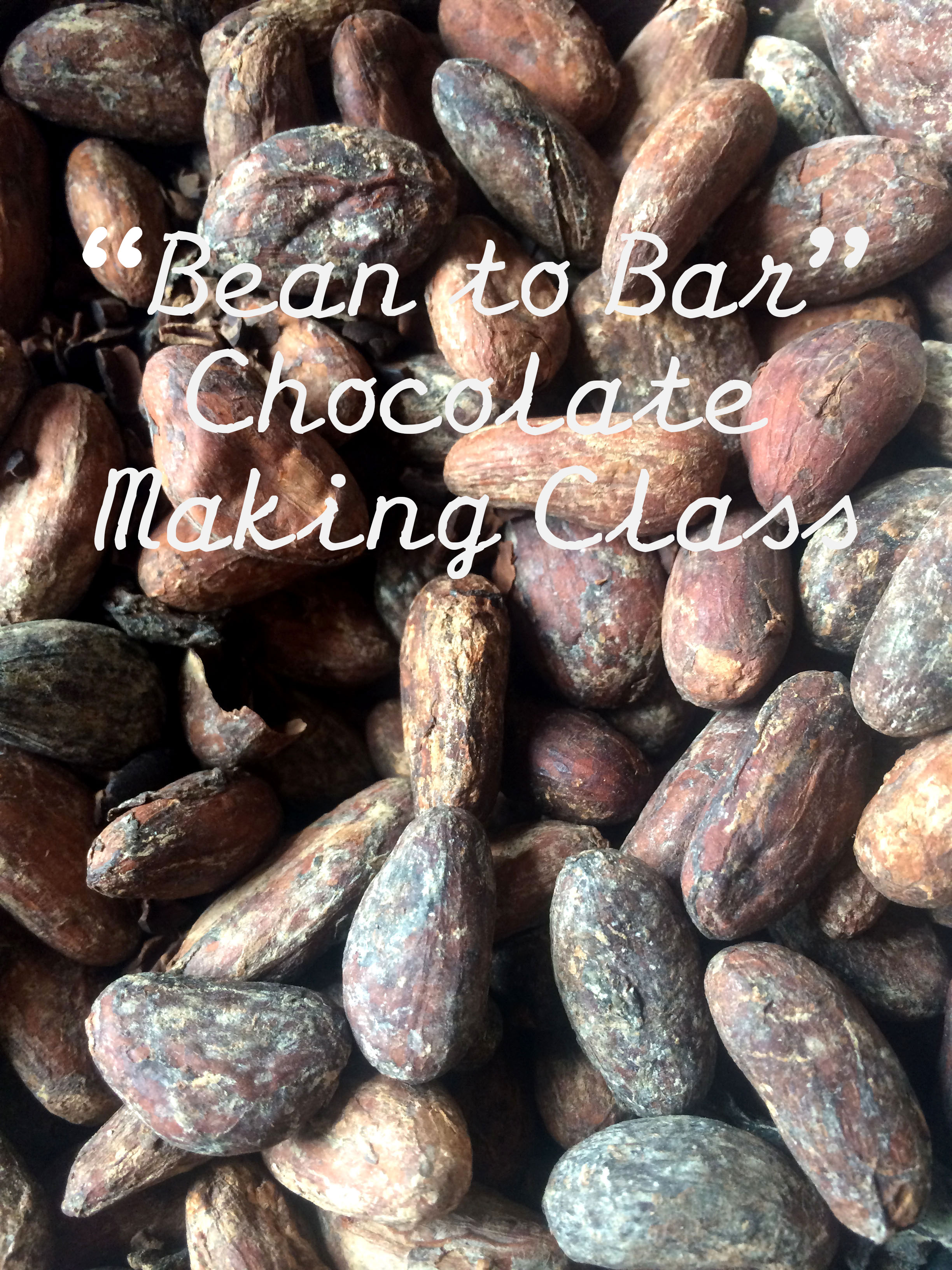
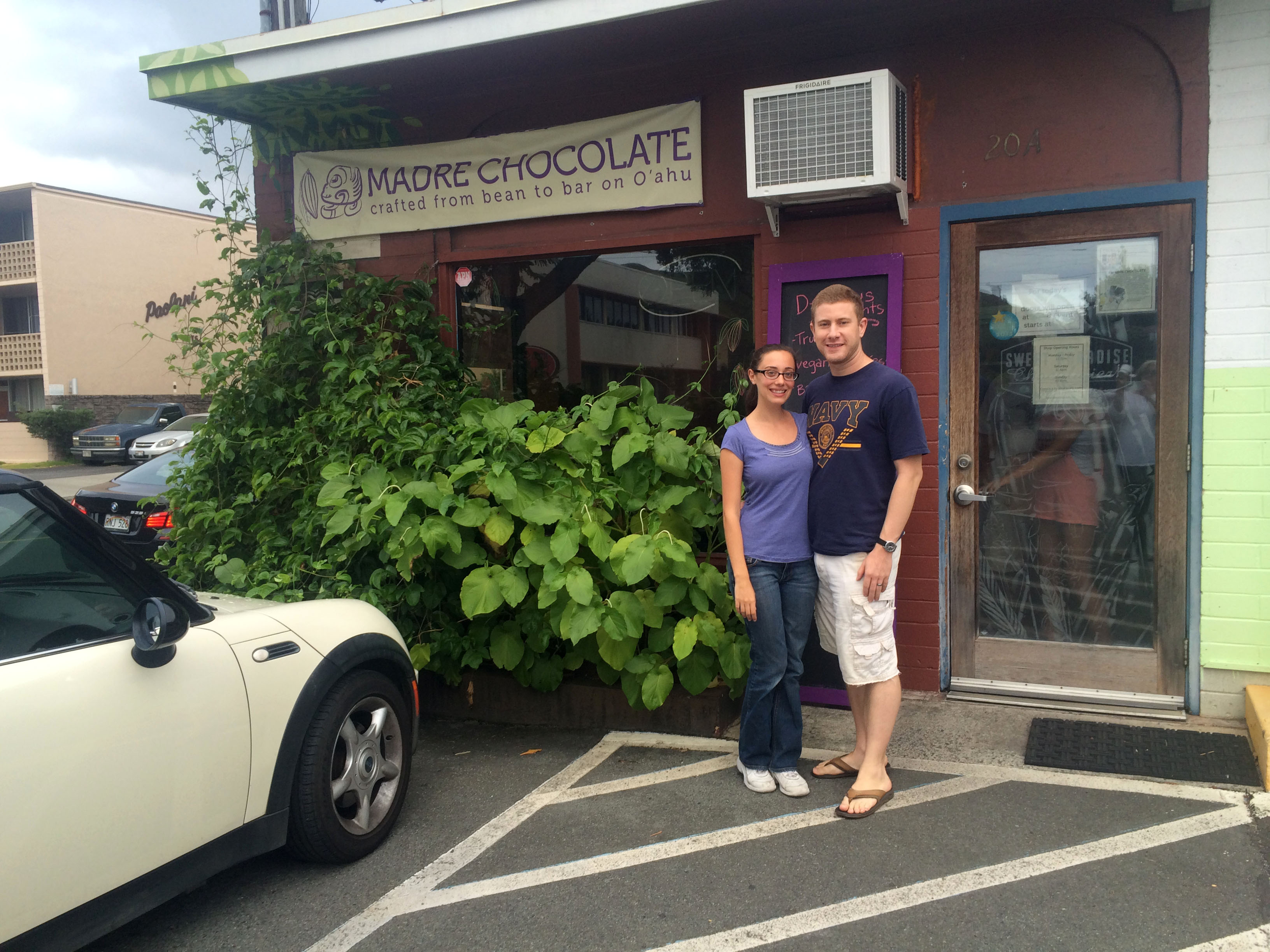
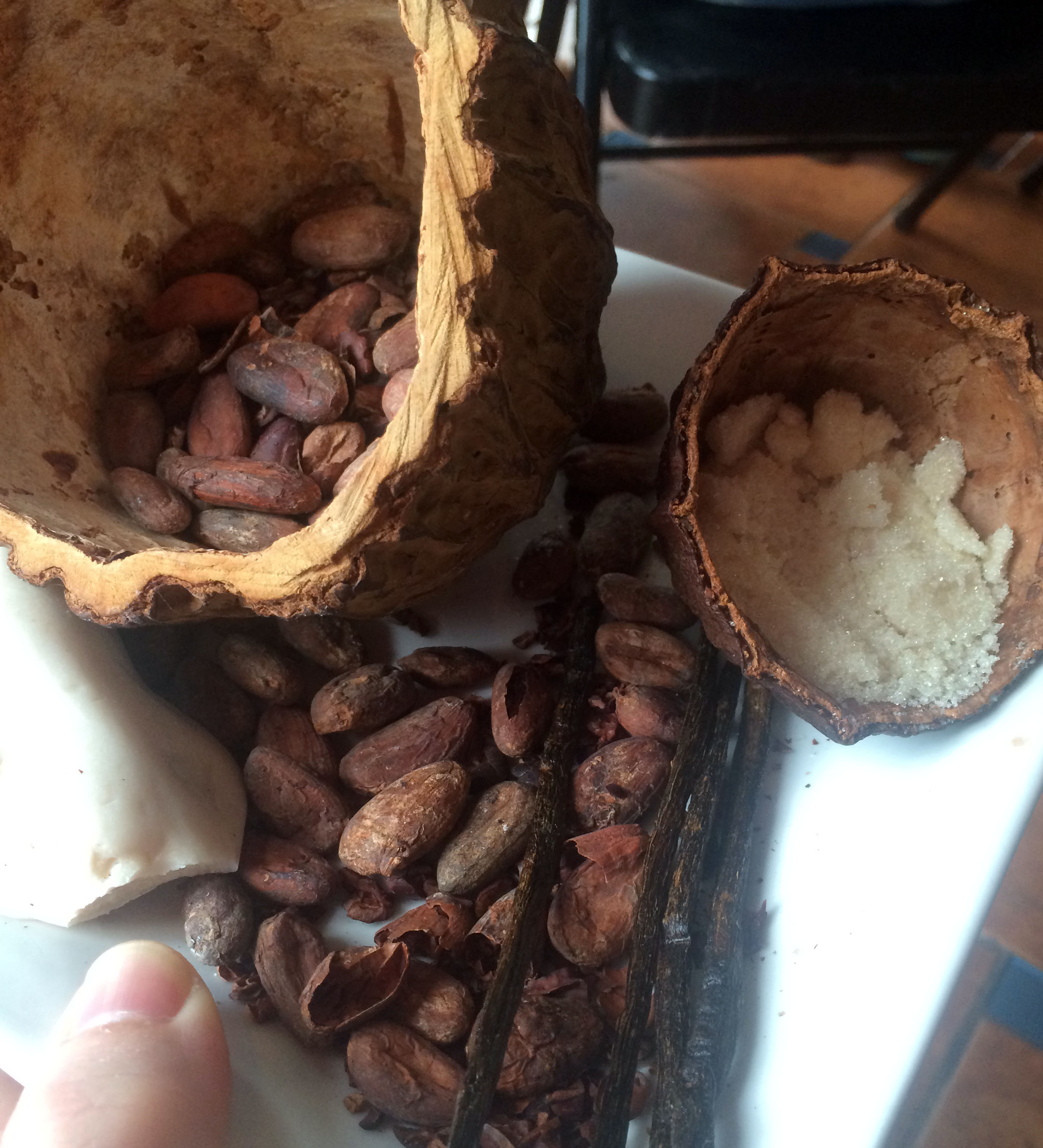
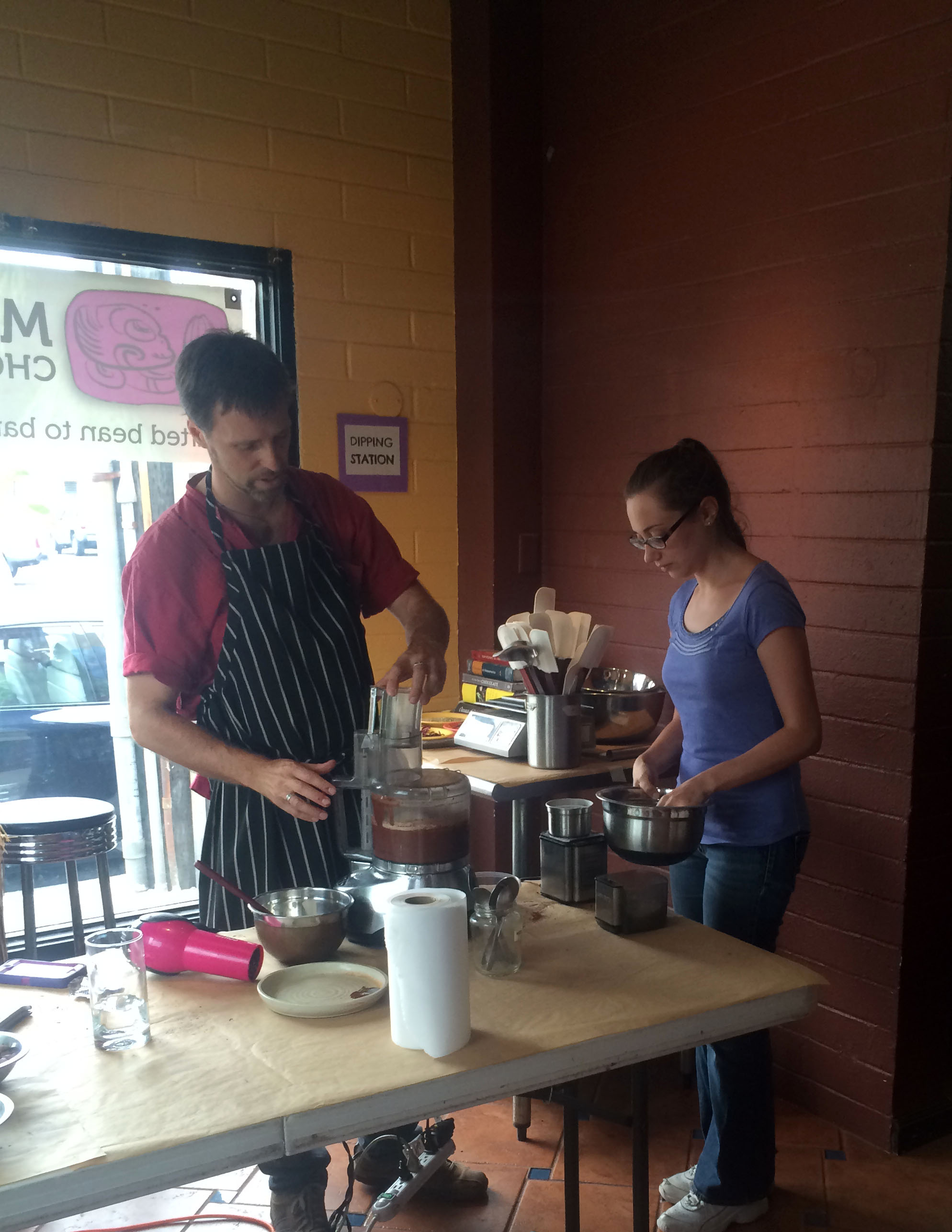
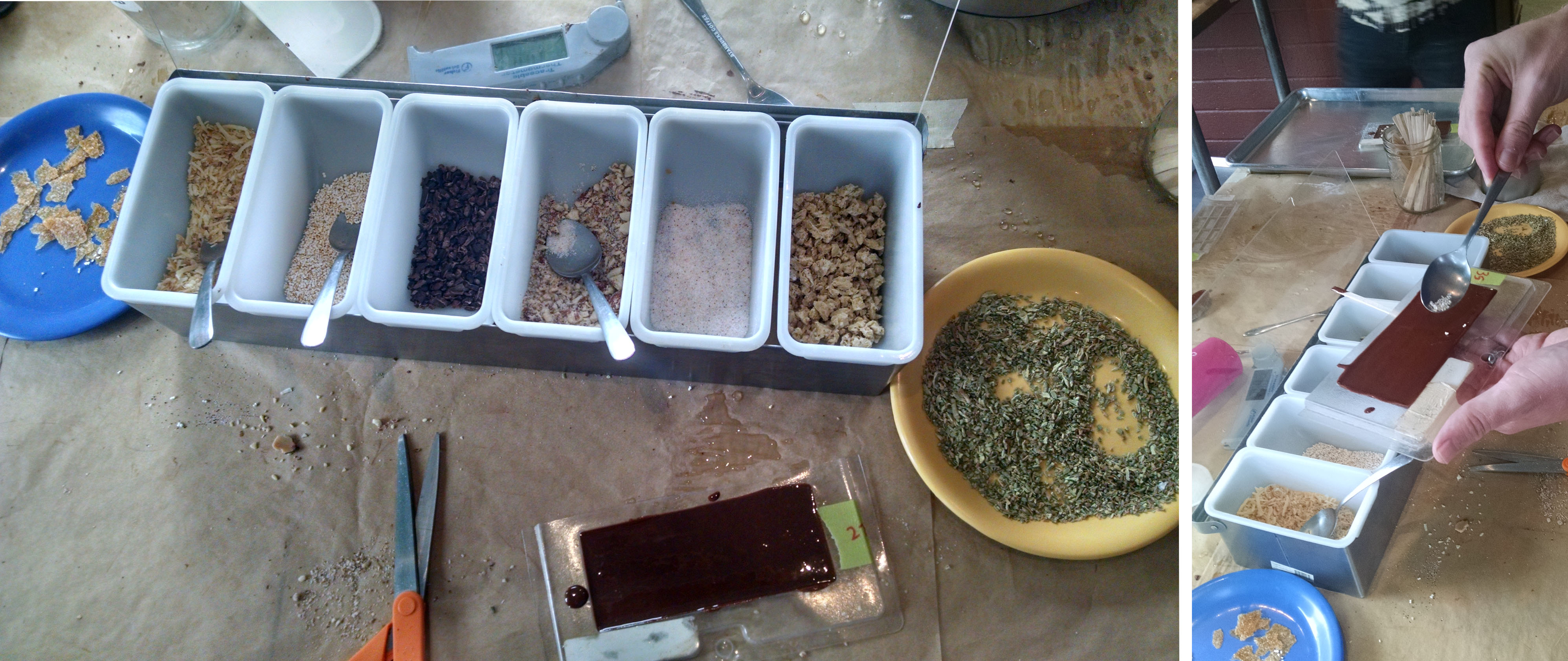
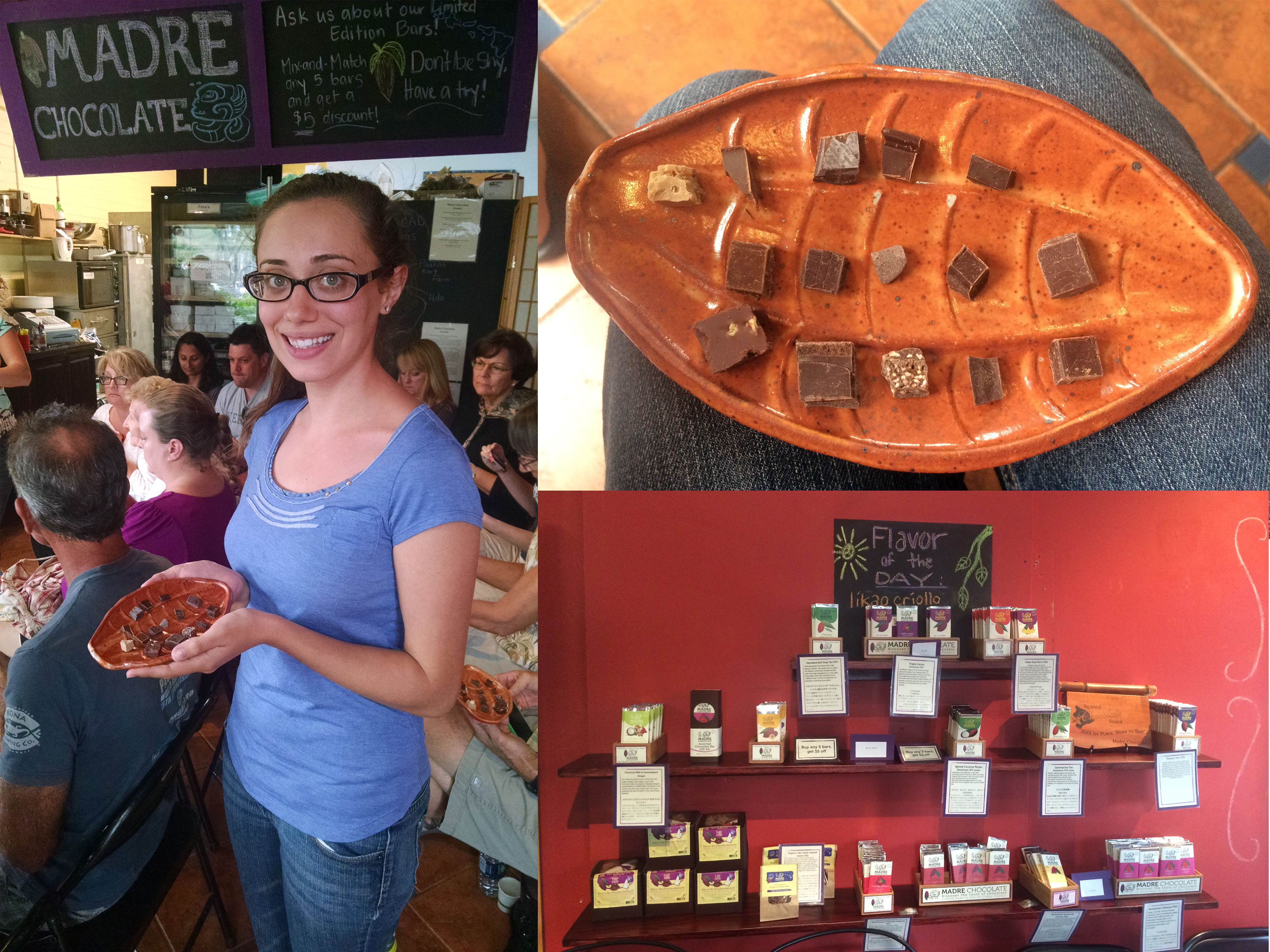
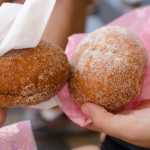
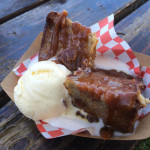
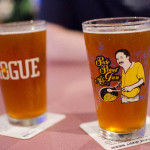







Oh this is SO cool!!! What a fun thing to take advantage of and learn about!!
Holly, it was so much fun! I can’t believe that Hawaii isn’t more well-known for this after hearing how specialized the farms have become here.
You know, next time i see you, you are making chocolate for me. Also this is probably the most yummy part of the page. Did i miss this chocolate class…It sounds really great! I will probably eat all while making it
I will make some for you! And if you come to Hawaii, I promise to bring you to the class 🙂